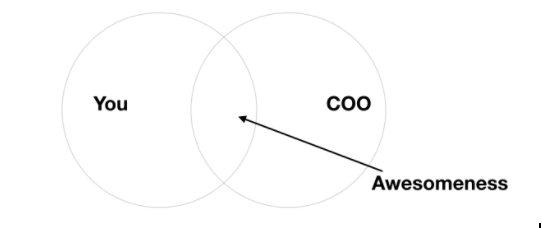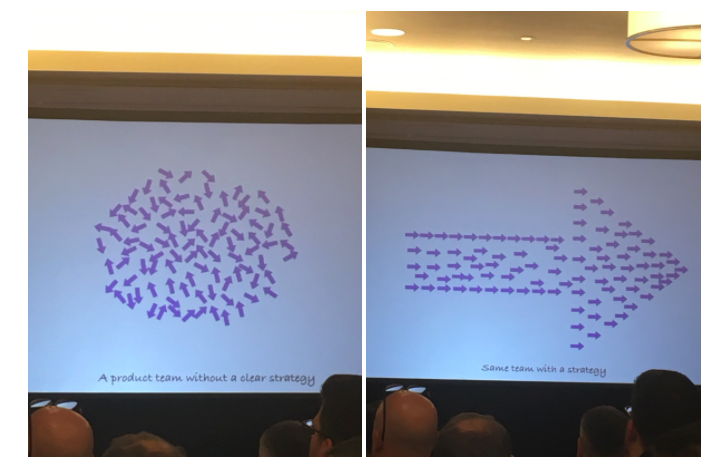Post written by guest blogger Chris Cooper.
As with any conference the size of SaaStr, you must make some important choices. Do you pack your schedule, filling every possible time slot? Or, should you cooly hang by the bar and network? Which session do you attend when two good sessions are happening at the same time? Do you really need that 10th t-shirt? And, of course, should you skip the afternoon to take a nap before the drinking and parties begin?
No matter what choices you made, day one was jam-packed with amazing sessions and incredible insights. At the risk of flaming out on day one, I filled my schedule, hitting up a good mix of sales, marketing, and content sessions from early morning to sundown. Here are my biggest takeaways from the day:
Stop Listening to Conventional Wisdom
Quarterly sales quotas? Dumb. Set the bar higher and do them monthly. And those pipeline reviews? They need to happen weekly. Well, that’s what Rainforest QA’s Sam Blond had to say this morning. In short, “time kills all deals,” so shorten your feedback loops, raise the stakes, and get to work!
And on a similar note, Intercom’s COO Karen Peacock told the story of using marketing dollars to hire engineers for a better onboarding experience in her days at Intuit. Unconventional? Of course! And everyone made sure to let her know how crazy she was. But the results proved them all wrong and now she’s a genius (well, she was a genius before, but now everyone knows it).

And if you’re looking to hire a COO anytime soon, Karen says to ignore the advice of hiring your opposite. COOs fail because CEO hire their polar opposites. Instead, look for someone who can be the second circle in your Venn diagram; someone who can lay out the playing field with you but has some overlap with your strengths.
And if you want to find bigger success, stop focusing on revenue. Value and engagement will bring revenue with them, but you have to make sure you have a deep understanding of your customer. Figure out how to measure the value you add and get better from there. Use inspiration and intuition to fuel your best ideas by doing two things; 1. Fall in love with the problem of today, not the solution of tomorrow, and; 2. Watch what people do, not what they say.
Find Guidance in Basic Principles
Pixar’s Jason Katz and Prezi’s Peter Arvai talked about sticking to simple frameworks to move people emotionally. By identifying a central theme before all else, you give your story and your team a true north, helping guide all decisions and keeping everyone focused on what matters. Before ever beginning, figure out what questions deserve to be answered, how the parts will fit together, and how you can execute in the most honest way possible.
Similarly, Intercom Co-founder Des Traynor—speaking to an over-packed house—showed us how a deceptively simple idea like “Build what you sell, sell what you build” can keep everyone on track.
Make or break decisions are based just as much in what you won’t do as they are in what you will do. Without defined principles (i.e. strategy), your product team, marketing, and sales all end up moving in different directions, causing mass confusion for customers (and major problems for you).

“You can’t focus on the cherries on top when the actual cake is made of dog shit.”
Great products fight for a mission and represent unique opinions and values. You have to get everyone aligned with the mission and the strategies to allow decisions to take care of themselves. Nemo, Marlin, and Dori would, undoubtedly, agree.
The Deeper Story Reveals So Much More
We’re all looking for meaning, whether it’s in the products we buy our the jobs we choose. It can be as simple as a connection with the people who make your yogurt or the legacy behind a hundred-year-old brand.
Mailchimp’s CMO Tom Klein talked about finding deeper meaning in little moments, the importance of chronicling and learning from our failures, and looking for the romance in the stories we tell. Differentiation comes from being explicit, personal, and sometimes, a little weird. But without understanding and telling the stories of those small moments, you’re always playing from behind.
SproutSocial CEO, Justyn Howard, has built a nearly $100M ARR inbound machine by focusing on small moments too. Cautioning a very hot and bursting-at-the-seams ballroom full of people to ignore averages, he showed us that efficiency comes from understanding that deeper story behind your analytics.
Don’t be tricked by averages. Dig deeper into the data to root out inefficiencies, no matter how small they might be. The deeper story of your analytics can tell us so much more, but we have to be willing to look. And once you know the deeper story, you’ll have a better chance of telling a better one.
Takeaway From the Takeaways
As I finish writing this, I can’t help but feel I’ve done some injustice here. There’s simply no way to convey in a blog post the deep learning and insights I took away from day one. But at the heart of it are some common threads…
Listen to your customers, listen to yourself, and nail the basics. The rest will fall in line.
And if you’re still not convinced, day two will certainly deliver as much if not more than day one. Take your time, soak it all in, and if you really need to wonder if one more piece of swag will fit in your suitcase, trust me, it will.
Chris Cooper owns Real Good Writing in Denver, CO where he helps SaaS companies with Seed or Series A funding create and execute a content marketing strategy. Visit him at www.rgwriting.com or connect on Twitter @ElCoopacabra.

